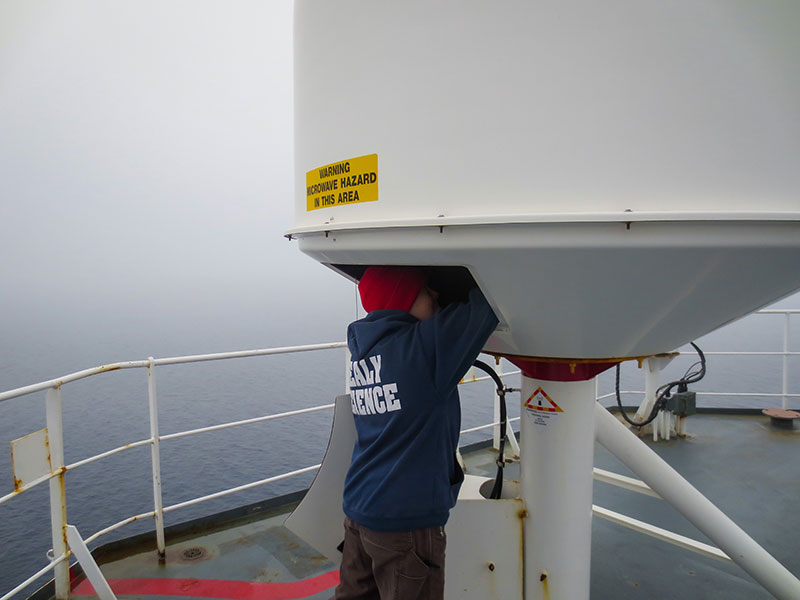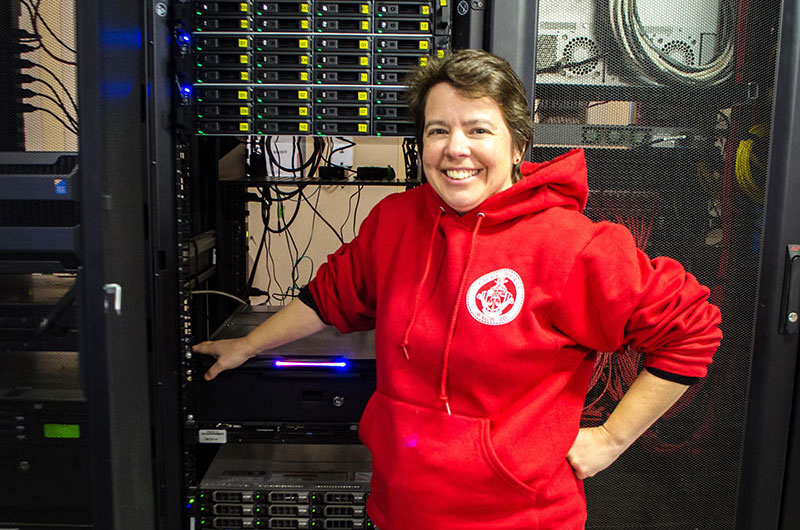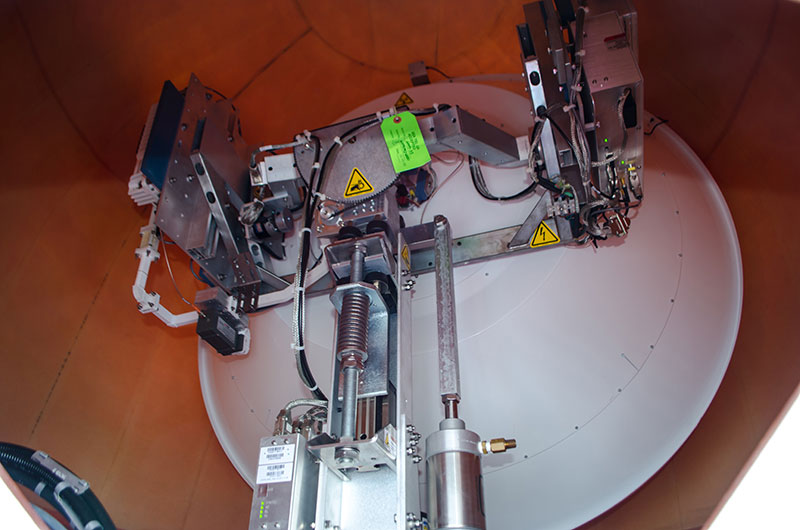
By Sarah Kaye, Network Administrator, U.S. Coast Guard C4IT
July 25, 2016

Sarah Kaye works on a satellite dish inside a dome on the top deck of the U.S. Coast Guard Cutter Healy. One of the most prevalent challenges of getting an Internet signal in the Arctic is overcoming atmospheric conditions, such as fog. Image courtesy of Sarah Kaye, U.S. Coast Guard C4IT, The Hidden Ocean 2016: Chukchi Borderlands. Download larger version (2.2 MB).
We have an Internet connection on a ship in the Arctic Ocean! How cool is that? Well, it isn’t broadband. That it works at all is due to a bunch of nifty technology that does its job quietly and effectively most of the time. If it did its job all of the time, my work day would be more predictable and less fun.
Standard commercial communication satellites are geosynchronous, meaning they are in a fixed orbit that matches the Earth’s rotation. This way, they can keep talking to the same ground station. That also means, due to orbital mechanics, they are in an orbit over the equator. As we travel north, we get more planet and more atmosphere in between us and them. By the time we’re up in the far North, we’re down to one satellite we can talk to and our satellite dishes are aimed at just barely over the horizon.

Sarah Kaye stands in front of the system that provides Internet for the entire ship. Image courtesy of Caitlin Bailey, GFOE, The Hidden Ocean 2016: Chukchi Borderlands. Download larger version (3.5 MB).

Inside one of the domes on the top deck is a satellite dish aimed at a satellite just above the horizon. Image courtesy of Caitlin Bailey, GFOE, The Hidden Ocean 2016: Chukchi Borderlands. Download larger version (2.5 MB).
At the limit of signal coverage, our system becomes more vulnerable to atmospheric conditions like fog or mist and, unfortunately, it is often foggy in the Arctic. The system is really good at handling ship motion, though. We can be thrown about by swells and still have Internet...if you really want to be staring at a computer screen. I prefer taking a break to go to the bridge and watch sea spray coming over the bow.
When our equipment doesn’t work, it’s a challenge to troubleshoot because satellite logic is its own world. Over time, we have built up a knowledge base on how to prop the satellite dishes back up when they fall over (figuratively….most of the time).
When our normal coverage fails, we still have a fallback: a network of small, chatty satellites in polar orbits that ‘talk’ to each other. Our signal can go up to one satellite, bounce through several more, and come down to Earth where we need it. This works everywhere, but the down side of this technology is that it’s very low bandwidth. There is no Internet browsing, but we can still send text email. Very handy.
In addition to the communications off the ship, the rest of my job is more like a conventional IT support job. Each different science group presents different challenges, so it’s never boring. The best part of my job is supporting cool science in a unique environment.